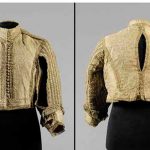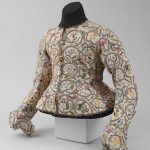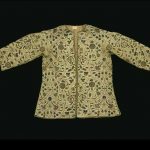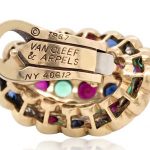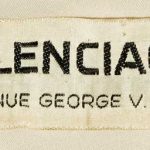17th century jackets are now extremely rare and most of our knowledge is gained from portraits. Some surviving examples are found in museums and occasionally some may come up at auction.
One of the trends of this era was the doublet, a fitted and padded jacket. By the 17th century, doublets were short-waisted. A typical sleeve of this period was full and slashed to show the shirt beneath; a later style was full and paned or slashed to just below the elbow and snug below. Decorative ribbon points were pulled through eyelets on the breeches and the waist of the doublet to keep the breeches in place, and were tied in elaborate bows.
The doublet fell permanently out of fashion in the mid-17th century when Louis XIV of France and Charles II of England established a court costume for men consisting of a long coat, a waistcoat, a cravat, a wig, and breeches—the ancestor of the modern suit. Reference: Wikipedia
An important and rare cloth of gold doublet, British, Late 1640s or early 1650s The fabric probably Italian with overall figured repeat of small flowerheads, with buttoned closures to the unadorned boned collar and front closure, the collar cut high at the front and more narrowly at the back, the high waist adorned with eyelets intended to take decorative ribbons, the elaborate sleeves slashed from under-arm to deep cuff along one side (thereby allowing sight of an inner-shirt) the sleeves formed by narrow vertical strips of fabric joined by bands of gold bobbin lace forming stripes, the back with vertical opening from below the collar to the centre of the shoulders, lined in cream tabby silk, with six original chamois leather and steel loops to the inner waist (for fastening to breeches) Chest 101cm, 40in; neck to waist from centre back 46cm, 18in; sleeve length from shoulder seam 48cm., 19in
Sold for 24,000 GBP at Sotheby’s in 2003
Jacket ca. 1616 British In this seventeenth-century jacket, floral and vegetal motifs are accounted for with scientific clarity but assembled along traditional continuous meanders. Like seventeenth-century still-life painting in its global reach and analytical approach, the jacket suggests both abundance and taxonomy.
Reference: The Metropolitan Museum of Art
A woman’s jacket, 1600-25, English; Silk embroidered with silk, metal thread, spangles, with a silk shag lining
This early 17th century woman’s jacket is made of silk, a more luxurious fabric than the linen typically used for such garments. However it is made in a loose, informal style not seen in portraiture. The lining of shag (silk velvet with a long pile) suggests the garment was intended for warmth as well as adornment. It is richly embroidered in silver and silver-gilt thread, purl, strip and spangles. The design of rose, marigold, honeysuckle, pansy and lily flowers in a symmetrical interlacing of stems is worked in couched work, satin stitch and stem stitch.
Reference: © Victoria and Albert Museum
[geolocator_show for=”GB”][ebayfeedsforwordpress feed=”http://rest.ebay.com/epn/v1/find/item.rss?keyword=doublet&categoryId1=175759&sortOrder=BestMatch&programid=15&campaignid=5338620288&toolid=10039&customid=pastimefashions-rss-uk-17th-century-jackets&listingType1=All&feedType=rss&lgeo=1″ items=”20″][/geolocator_show]
[geolocator_hide for=”GB”][ebayfeedsforwordpress feed=”http://rest.ebay.com/epn/v1/find/item.rss?keyword=doublet&categoryId1=163147&sortOrder=BestMatch&programid=1&campaignid=5338620289&toolid=10039&customid=pastimefashions-rss-us-17th-century-jackets&listingType1=All&feedType=rss&lgeo=1″ items=”20″][/geolocator_hide]
